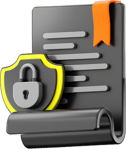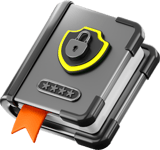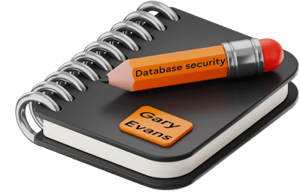Before we jump in, here's a pro tip: you can download this specific benchmark from the CIS website at https://www.cisecurity.org/benchmark/postgresql. I highly recommend grabbing a copy to follow along as we explore this together. It's a fantastic way to see how a specific guideline can significantly strengthen your database's defence mechanisms.

In my previous article on this series, I emphasized the crucial role of security benchmarks in safeguarding the security of your database. Establishing and adhering to security benchmarks is a proactive approach to protect your valuable data from unauthorized access, breaches, and potential data mishaps. Before we delve into our example, you might want to read about it here.
Understanding DML privileges in PostgreSQL
First off, let's dive into the topic at hand. DML privileges, which encompass actions like INSERT, UPDATE, DELETE, etc., are critical for user interactions with your database. It's essential to find the right balance for these privileges – they need to be just right, neither too generous nor too restrictive.
Why Choose This Example? In the realm of database management, excessive DML privileges can create significant security vulnerabilities, leaving your database open to unintended or malicious data mishaps. Think of it as being like distributing too many keys to a safe. This particular example is a good choice for its simplicity and clarity, making it a fitting introduction to the concept and advantages of using database benchmarks.
Tackling CIS Benchmark for PostgreSQL 16 - Section 4.4
Step 1: Audit your privileges
Kick off with an audit of your current privilege settings. PostgreSQL offers handy functions for this. By carefully auditing your privilege settings, you can identify any unnecessary or excessive privileges that may pose a risk to the integrity of your data.
Your goal here is to spot any privileges that overshoot a user's role needs.
Step 2: Develop a revocation plan
Found some privileges that need trimming? Great, but let's not be hasty in revoking them.
Plan this out, considering the potential impacts and communicating with your team to prep for changes. Will it affect any ongoing projects or tasks? Are there any dependencies on these privileges that need to be addressed? By thoroughly planning out the revocation process, you can minimize any disruptions and ensure a smooth transition.
Step 3: Execute the revocation
Next comes the crucial step – utilizing the REVOKE command to strip away those unneeded privileges. For instance, executing REVOKE DELETE ON table_name FROM user_name; effectively removes the permission to delete records from table_name.
When modifying any database, it's always advisable to script these changes, commit them to source control, and keep a record of when and what alterations are made. I'll be discussing this further in an upcoming blog, where we'll delve into pg_audit, which is an invaluable tool for monitoring DML changes in both Fujitsu Enterprise Postgres and PostgreSQL databases. It generates comprehensive audit logs, enabling you to track and document all DML activities.
Step 4: Keep it up
Remember, database security is an ongoing game. Continuously review and adjust privileges to align with changing roles and responsibilities.
Consider automating these audits for efficiency.
Best practices to remember
- Embrace least privilege
This principle is your best friend. Only grant the bare minimum access needed for each user.
- Document and communicate
Maintain clear records of access permissions and keep your team in the loop about any changes.
- Stay vigilant
Regularly monitor how privileges are being used. Unusual patterns? Investigate!
Conclusion
Diving into this specific CIS Benchmark for PostgreSQL is more than just a theoretical exercise; it's a hands-on approach to tightening your database security. And it's just one part of the broader picture. Keep that CIS benchmark handy as we continue to explore other key strategies in our upcoming blogs. Together, we'll ensure that your databases are not just operational but also secure fortresses.
Next on this series
 In my next article, I'll deepen our exploration into Fujitsu Enterprise Postgres and PostgreSQL security by focusing on Access Control. See you there.
In my next article, I'll deepen our exploration into Fujitsu Enterprise Postgres and PostgreSQL security by focusing on Access Control. See you there.
Don't miss out on this valuable information - be sure to subscribe to be notified of new posts.


 Hey there, database gurus!
Hey there, database gurus! 


